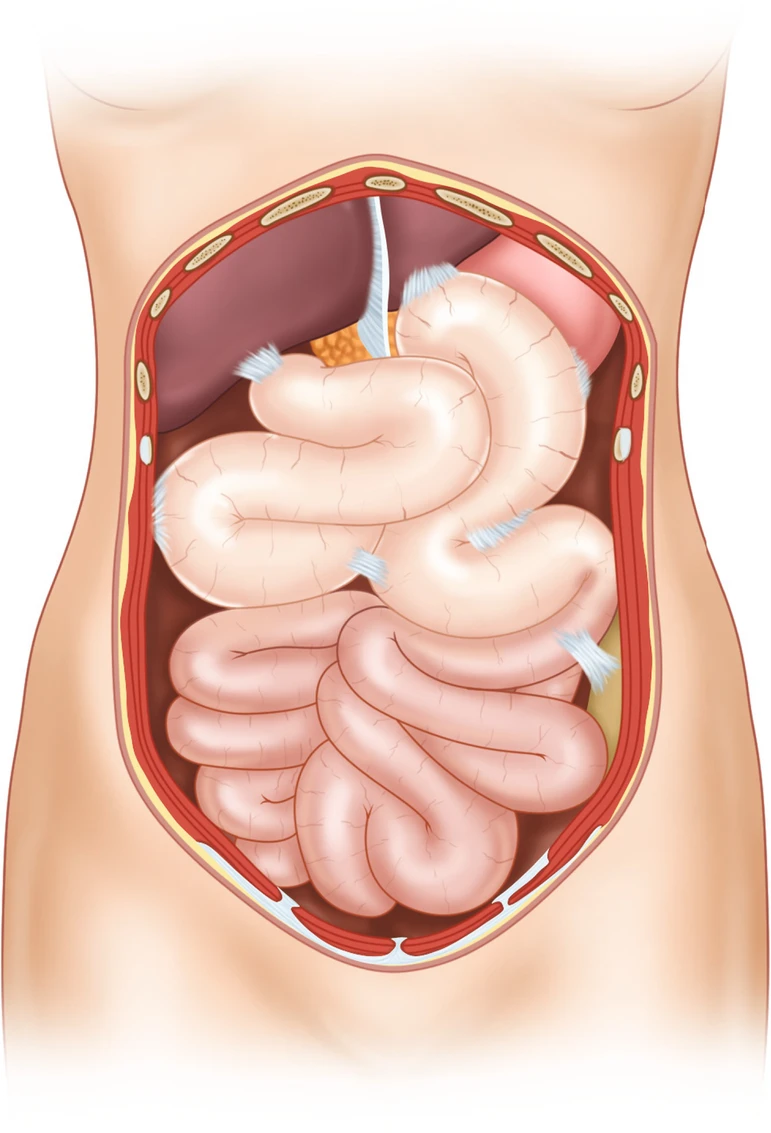Specialty >> Laparoscopic Treatment for Adhesions
Laparoscopic Treatment for Adhesions

Intra-abdominal adhesions constitute between 49% and 74% of the causes of small bowel obstruction. Traditionally, laparotomy and open adhesiolysis have been the treatment for patients who have failed conservative measures or when clinical and physiologic derangements suggest toxemia and/or ischemia. With the increased popularity of laparoscopy, recent promising reports indicate the feasibility and potential superiority of the minimally invasive approach to the adhesion-encased abdomen.
The purpose of this study was to assess the outcome of laparoscopic adhesiolysis and to provide technical tips that help in the success of this technique. The most important predictive factor of adhesion formation is a history of previous abdominal surgery ranging from 67%-93% in the literature. Conversely, 31% of scars from previous surgery have been free of adhesions, whereas up to 10% of patients without any prior surgical scars will have spontaneous adhesions of the bowel or omentum. Most intestinal obstructions follow open lower abdominopelvic surgeries such as colectomy, appendectomy, and hysterectomy. The most common complications associated with adhesions are small bowel obstruction (SBO) and chronic pain syndrome.
The treatment of uncomplicated SBO is generally conservative, especially with incomplete obstruction and the absence of systemic toxemia, ischemia, or strangulation. When conservative treatment fails, surgical options include conventional open or minimally invasive approaches; the latter have become increasing more popular for lysis of adhesions and the treatment of SBO. Generally, 63% of the length of a laparotomy incision is involved in adhesion formation to the abdominal wall. Furthermore, the incidence of ventral hernia after a laparotomy ranges between 11% and 20% versus the 0.02%-2.4% incidence of port site herniation. Additional benefits of the minimally invasive approaches include a decreased incidence of wound infection and postoperative pneumonia and a more rapid return of bowel function resulting in a shorter hospital stay. In long-term follow up, the success rate of laparoscopic lysis of adhesions remains between 46% and 87%. Operative times for laparoscopy range from 58 to 108 minutes; conversion rates range from 6.7% to 43%; and the incidence of intraoperative enterotomy ranges from 3% to 17.6%. The length of hospitalization is 4-6 days in most series. Laparoscopic lysis of adhesions seems to be safe in the hands of well-trained laparoscopic surgeons. This technique should be mastered by the advanced laparoscopic surgeon not only for its usefulness in the pathologies discussed here but also for adhesions commonly encountered during other laparoscopic procedures.

